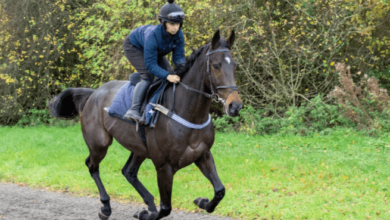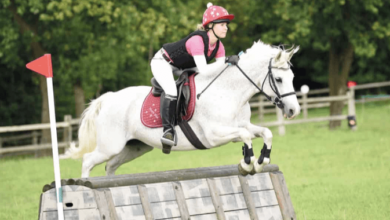How can one prevent injuries in cross-country riding?

Preventing injuries in cross-country riding requires a comprehensive approach that combines physical preparation, equipment safety, proper technique, and a keen awareness of the environment. Cross-country riding, whether on horseback or as part of cycling and other endurance sports, presents unique challenges due to the varied terrains, unpredictable obstacles, and sustained intensity. Here’s a detailed guide on how to prevent injuries during cross-country riding.
1. Physical Fitness and Conditioning
One of the most important ways to prevent injuries in cross-country riding is by maintaining an optimal level of physical fitness. This sport demands endurance, strength, balance, and flexibility. For riders, whether on a horse or bike, having a strong core is crucial because it allows for better control over movement and minimizes strain on joints and muscles.
Engage in a well-rounded fitness program that includes aerobic exercises (like running, swimming, or cycling), strength training (focusing on legs, core, and upper body), and flexibility routines (such as yoga or stretching). For cyclists, exercises that enhance leg strength, such as squats and lunges, are particularly beneficial. For equestrian riders, balance exercises on unstable surfaces like balance boards can help improve your riding posture and reaction time.
Consistency in your conditioning program is key, as it ensures that your muscles and joints can withstand the rigors of long-distance and uneven terrains, reducing the risk of strains or sprains.
2. Proper Warm-Up and Cool-Down
Warming up is essential to prepare your muscles and joints for the physical demands of cross-country riding. A dynamic warm-up before riding helps increase blood flow to your muscles, improves flexibility, and enhances your range of motion. Activities like light jogging, cycling at a moderate pace, or dynamic stretching exercises (such as leg swings, arm circles, or hip rotations) are great for warming up.
Equally important is the cool-down process, which helps your body recover and reduces stiffness. After completing a ride, spend time doing static stretches, focusing on the major muscle groups used during the ride, such as the legs, lower back, and shoulders. Stretching helps release tension and prevents muscle soreness, which could contribute to injury if not properly managed.
3. Equipment Check and Proper Fit
Having the right equipment and ensuring that it fits properly is critical to injury prevention. For cross-country cyclists, this means checking the bike’s fit, saddle height, and handlebar position to avoid placing unnecessary stress on your back, neck, and knees. A bike that doesn’t fit properly can lead to repetitive strain injuries, particularly in the lower body.
For horseback riders, ensuring that your tack (saddle, stirrups, bridle, etc.) fits both you and your horse correctly is vital. Ill-fitting tack can lead to discomfort for both the rider and the horse, increasing the likelihood of accidents or falls. Regularly inspect your equipment for wear and tear, as broken or damaged equipment can cause catastrophic injuries.
Both cyclists and equestrians should always wear helmets that meet safety standards to protect against head injuries. For cyclists, additional protective gear such as gloves, knee pads, and padded shorts can help protect against common injuries like cuts, bruises, and abrasions.
4. Develop and Practice Good Technique
Good riding technique is a key factor in avoiding injuries. In cross-country cycling, maintaining a proper riding position—hips back, chest low, elbows bent—helps distribute weight evenly and reduces pressure on joints. Learn to shift gears efficiently to avoid placing too much strain on your knees and use your body’s weight to absorb shocks from rough terrain instead of letting it all go to your joints.
For horseback riders, maintaining a balanced and relaxed seat is important for preventing injury, both to yourself and your horse. Keep your heels down, your back straight, and avoid gripping too tightly with your legs, which can lead to stiffness and fatigue. Practicing proper jumping techniques and staying centered over your horse can also help prevent falls or other accidents on cross-country courses.
Whether you’re on a horse or a bike, gradual progression in technique and difficulty level is important. Don’t tackle advanced courses or high jumps before you’re ready—build up your skills and confidence over time to avoid overexerting yourself and increasing your injury risk.
5. Terrain Awareness and Hazard Management
Cross-country riding involves navigating through various terrains, which can be unpredictable and sometimes hazardous. Riders need to develop a keen sense of terrain awareness to identify potential dangers such as rocks, holes, roots, steep inclines, or slippery surfaces. Knowing how to handle different surfaces (mud, sand, gravel) and obstacles (water crossings, jumps, sharp turns) is essential to avoid accidents.
For cyclists, maintaining a steady line of sight ahead and scanning the path continuously helps avoid sudden surprises that can cause crashes. Learning how to distribute weight on uneven terrain and practicing emergency braking techniques can make a big difference in preventing falls or collisions.
For equestrians, it’s important to give your horse time to assess the terrain, especially when approaching jumps, water hazards, or tight turns. Ride defensively and be prepared to adjust your position or pace depending on the conditions. Avoid pushing your horse too hard in difficult terrain, as this can lead to slips, trips, or exhaustion.
6. Incremental Training and Avoiding Overtraining
One of the common causes of injury in cross-country riding is overtraining or pushing your body (or your horse) too hard. It’s essential to build your endurance, strength, and skill level gradually. Avoid sudden increases in the intensity or duration of your rides, as this can lead to overuse injuries, such as tendonitis, stress fractures, or muscle strains.
Follow a structured training plan that includes periods of rest and recovery. Overtraining can result in both physical and mental burnout, which increases the risk of mistakes and accidents. For horseback riders, ensure that your horse is also gradually conditioned for the demands of cross-country riding and not overworked, as fatigue is a significant factor in injuries for both rider and horse.
7. Hydration and Nutrition
Proper hydration and nutrition play a significant role in preventing injuries. Dehydration can lead to muscle cramps, dizziness, and fatigue, all of which increase the likelihood of accidents and injuries. Be sure to drink plenty of water before, during, and after your rides.
In terms of nutrition, consuming a balanced diet rich in protein, carbohydrates, and healthy fats supports muscle recovery and energy levels. For longer rides, particularly in extreme conditions, consider energy snacks or electrolyte supplements to maintain optimal performance.
8. Listen to Your Body and Know When to Stop
Perhaps the most important aspect of injury prevention is learning to listen to your body. Ignoring pain, fatigue, or discomfort can lead to more serious injuries. If you feel pain during a ride, stop and assess the situation. Continuing to ride through pain can lead to long-term damage, whether it’s a muscle strain, joint issue, or a more serious injury.
For equestrians, it’s equally important to monitor your horse for signs of discomfort or fatigue. Horses can suffer from overuse injuries just like humans, and pushing them too hard can lead to lameness or other long-term health problems. Ensure that your horse is adequately warmed up and cooled down after rides, and give them ample rest between training sessions.
Conclusion
Preventing injuries in cross-country riding requires a holistic approach that includes physical fitness, good technique, equipment safety, terrain awareness, and mental preparation. By incorporating these preventative measures into your routine, you can minimize the risks and enjoy a safer and more enjoyable experience, whether on two wheels or four hooves. Remember that injury prevention is not just about protecting yourself but also about safeguarding your riding partner, whether that’s your horse or your bike, ensuring that both can perform at their best for years to come.




